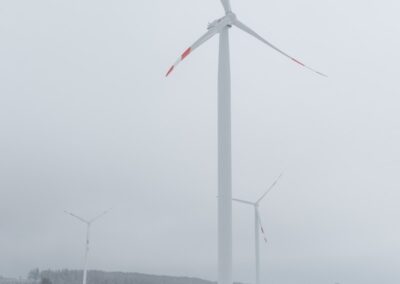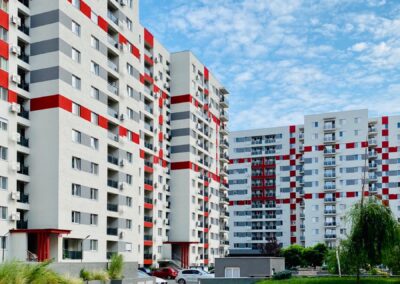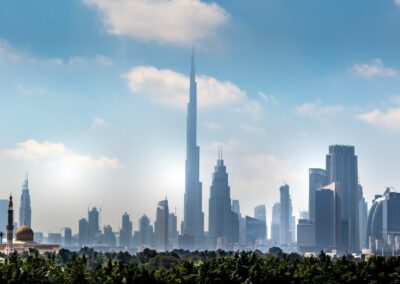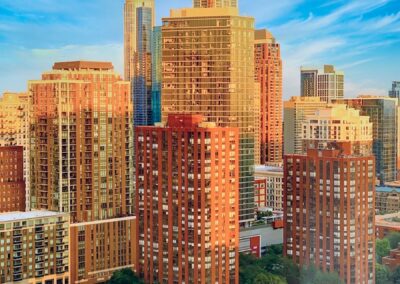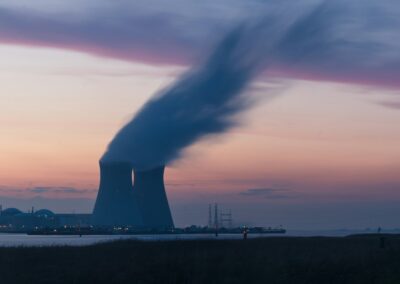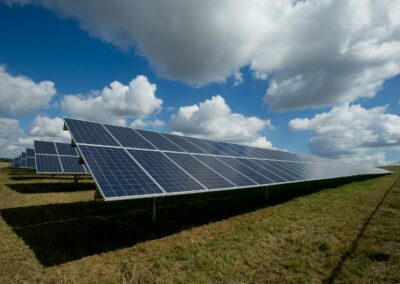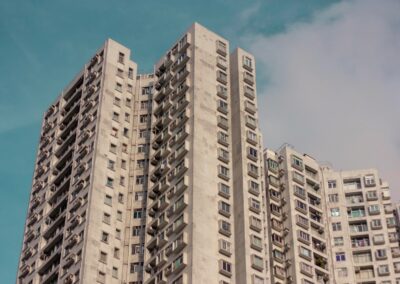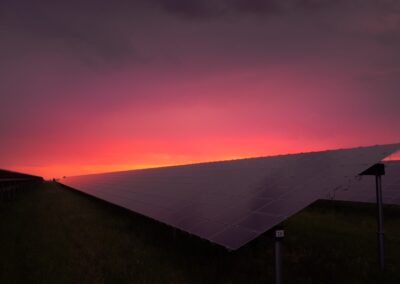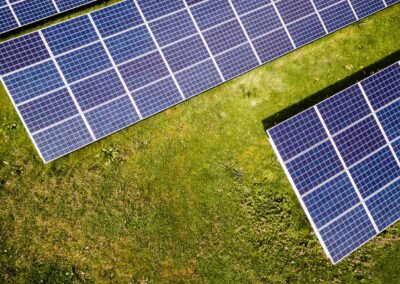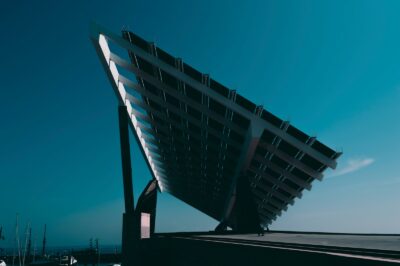Overcoming Barriers to Sustainable Urban Development
Introduction to Retrofitting High-Rise Buildings for Energy Efficiency
The focus on retrofitting high-rise buildings for energy efficiency has become increasingly significant as cities around the world strive to achieve sustainability goals. In regions such as Saudi Arabia and the UAE, where skyscrapers dominate the urban landscape, enhancing the energy efficiency of existing high-rise buildings is a critical priority. This process, however, presents several challenges that require innovative strategies and the integration of advanced technologies. As cities like Riyadh and Dubai continue to grow and modernize, addressing these challenges is essential to ensure sustainable development and environmental stewardship.
High-rise buildings, by their nature, consume substantial amounts of energy for heating, cooling, lighting, and other essential functions. Retrofitting these structures to improve energy efficiency involves significant technical, financial, and logistical challenges. Yet, the benefits of successful retrofitting are considerable, including reduced energy consumption, lower operational costs, and decreased environmental impact. In technologically advanced regions like Saudi Arabia and the UAE, where innovation is at the forefront of urban development, leveraging modern technology can provide effective solutions to these challenges.
Moreover, the integration of energy-efficient technologies in high-rise buildings aligns with the broader goals of smart city initiatives. These initiatives aim to create more livable, efficient, and sustainable urban environments. By exploring the potential of retrofitting high-rise buildings, cities like Riyadh and Dubai can not only enhance their sustainability but also set an example for other urban centers worldwide. Through strategic planning and the use of cutting-edge technology, the challenges of retrofitting can be overcome, paving the way for a greener and more energy-efficient future.
Challenges of Retrofitting High-Rise Buildings
The process of retrofitting high-rise buildings for energy efficiency involves several key challenges. One of the primary obstacles is the technical complexity associated with upgrading existing building systems. High-rise buildings are intricate structures with numerous interconnected systems, including HVAC, lighting, and water supply. Retrofitting these systems to enhance energy efficiency without disrupting building operations requires meticulous planning and execution. In cities like Riyadh and Dubai, where skyscrapers are essential components of the urban infrastructure, addressing this technical complexity is crucial to the success of retrofitting projects.
Financial constraints also pose a significant challenge to retrofitting high-rise buildings. The initial investment required for energy-efficient upgrades can be substantial, often deterring building owners and developers from undertaking such projects. Despite the long-term cost savings associated with reduced energy consumption, the upfront costs can be a major barrier. In regions like Saudi Arabia and the UAE, where economic diversification and sustainability are key strategic goals, finding innovative financing solutions to support retrofitting initiatives is essential. Public-private partnerships, government incentives, and green financing options can help mitigate financial barriers and encourage investment in energy-efficient retrofits.
Logistical challenges further complicate the retrofitting process. High-rise buildings are typically located in densely populated urban areas, making access and construction activities more difficult. Coordinating retrofitting projects in such environments requires careful consideration of safety, minimal disruption to occupants, and efficient project management. In technologically progressive cities like Riyadh and Dubai, leveraging advanced project management techniques and technologies can help address these logistical challenges. By implementing strategic planning and utilizing modern construction methods, the impact on building operations and urban activities can be minimized.
Strategies for Overcoming Retrofitting Challenges
To effectively address the challenges of retrofitting high-rise buildings for energy efficiency, several strategies can be employed. One of the most promising approaches is the integration of advanced technologies such as artificial intelligence (AI) and the Internet of Things (IoT). AI-powered systems can optimize building operations by analyzing data from various sensors and adjusting settings in real-time to enhance energy efficiency. For example, AI can manage HVAC systems to ensure optimal temperature and airflow, reducing energy consumption while maintaining occupant comfort. In regions like Saudi Arabia and the UAE, where technological innovation is a priority, adopting AI-driven solutions can significantly improve the efficiency of retrofitting projects.
Another effective strategy is the use of smart building materials and technologies. These include energy-efficient windows, insulation, and lighting systems that reduce energy consumption and improve building performance. Retrofitting high-rise buildings with smart materials can enhance thermal insulation, reduce heat gain, and optimize natural lighting, contributing to overall energy savings. In cities like Riyadh and Dubai, where extreme temperatures can lead to high energy use for cooling, implementing smart building technologies can provide substantial benefits. By selecting materials and systems designed for energy efficiency, the impact of retrofitting can be maximized.
Additionally, implementing comprehensive energy management systems can support the successful retrofitting of high-rise buildings. These systems integrate various building technologies and provide centralized control and monitoring, enabling efficient management of energy use. By continuously tracking energy consumption and identifying areas for improvement, energy management systems can help achieve and maintain optimal efficiency. In technologically advanced regions like Saudi Arabia and the UAE, where smart city initiatives are gaining momentum, deploying energy management systems can enhance the effectiveness of retrofitting projects and contribute to long-term sustainability goals.
The Role of Leadership and Policy in Retrofitting High-Rise Buildings
Effective leadership and supportive policies play a crucial role in retrofitting high-rise buildings for energy efficiency. Strong leadership is essential for driving the adoption of innovative technologies and practices in building management. Leaders in the public and private sectors must prioritize sustainability and energy efficiency, setting clear goals and allocating resources to support retrofitting initiatives. In regions like Saudi Arabia and the UAE, where visionary leadership is driving rapid urban development, fostering a culture of innovation and sustainability can accelerate the transition to energy-efficient buildings.
Government policies and incentives are also vital for encouraging retrofitting projects. Policies that provide financial incentives, such as tax breaks, grants, and low-interest loans, can help offset the initial costs of retrofitting and make energy-efficient upgrades more attractive to building owners. Additionally, regulations that mandate energy efficiency standards for existing buildings can drive widespread adoption of retrofitting practices. In cities like Riyadh and Dubai, where government support for sustainability initiatives is strong, implementing supportive policies can create an enabling environment for retrofitting high-rise buildings.
Public-private partnerships (PPPs) can further enhance the success of retrofitting projects. By collaborating with private sector entities, governments can leverage additional expertise, resources, and innovation to overcome the challenges of retrofitting. PPPs can facilitate the development of comprehensive retrofitting programs that combine public oversight with private sector efficiency and innovation. In regions like Saudi Arabia and the UAE, where collaboration between public and private sectors is driving urban development, PPPs can be a powerful tool for achieving energy efficiency goals in high-rise buildings.
Conclusion
The challenges of retrofitting high-rise buildings for energy efficiency are significant but not insurmountable. In regions like Saudi Arabia and the UAE, where skyscrapers are iconic symbols of progress and development, addressing these challenges is essential for achieving sustainability goals. By leveraging advanced technologies, adopting smart building materials, and implementing comprehensive energy management systems, the technical, financial, and logistical barriers to retrofitting can be overcome. Effective leadership, supportive policies, and public-private partnerships will be key to driving the success of retrofitting initiatives. As cities like Riyadh and Dubai continue to grow and modernize, focusing on energy efficiency in high-rise buildings will ensure a sustainable and prosperous future for urban environments worldwide.
—
#retrofitting #highrisebuildings #energyefficiency #sustainablearchitecture #smartbuildings #AIinconstruction #SaudiArabia #UAE #Riyadh #Dubai #moderntechnology #businesssuccess #leadershipskills #managementskills




